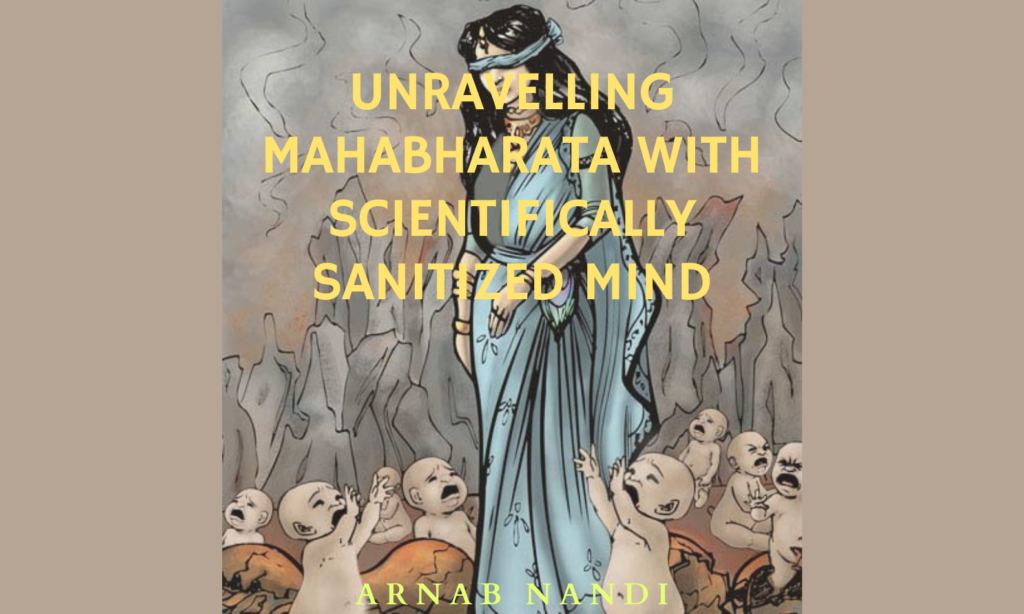
‘Grandma, tell me a story’
‘Well, then… this is a story from our ancient epic Mahabharata. Once there was a king named…………..’
This is one of our the most cherished memories of our beloved grandmothers from our early childhood. She also used to tell me ‘Whatever is here, may be found elsewhere; what is not cannot be found anywhere else.’ Even now, I still believe that. When I read an adapted version of Mahabharata, there were many incidents or should I say myths, that kept me wondering about both the possibility and the feasibility of the facts mentioned there. But to me, none of them was as astonishing as the event of the birth of 100 Kauravas and one daughter. Well, it seems nearly impossible to give birth to 100 children, even as of today. But can we think deep enough and see from views of our recent advances in biotechnology that if the myth can be described in a more acceptable and reasonable way… Let’s explore that –
What our ancient epic says
Both Kunti (mother of Pandavas) and Gandhari (mother of Kauravas) conceived at around the same time period. But while Kunti gave birth of Yudhishtir after ten months, due to some abnormalities, Gandhari could not deliver even after ten months of pregnancy. Being lost in the race of making her son as crown prince, frustrated Gandhari hit her womb several times and delivered a lump of tissues. Then the creator of the epic Vyas himself appeared and told to dissect the tissue mass into 100 pieces and put them in 100 containers filled with Ghee and close the lid for two years. There was also an extra piece of tissue collected separately, which was also put into another container. And after two years, 100 sons and a girl appeared from the containers.
Till now, the question arising in everyone’s head is like ‘Are you kidding me?’, but believe me, we can provide some light on this seemingly impossible concept or myth.
So, what our advancements in biotechnology can offer to illuminate the myth is as follows
Assume the case of Gandhari’s pregnancy as partial molar pregnancy (it is a gestational trophoblastic disease, where the embryo grows to some extent and turns into living or dead tissue mass without differentiation), and that she was blessed with twin pregnancy with one male and one female embryo, where the male embryo is turned to the tissue mass and the female embryo had restricted growth but otherwise normal. Segmentation was done for the undifferentiated male tissue mass. These segmented tissues being pluripotent, were cultured in a suitable nutrient enriched (alike uterine condition) culture medium and then they were implanted among 100 other potential women’s fallopian tube which is very similar to ZIFT (Zygote intra-fallopian transfer). Also the normal, but restricted-grown female embryo was transferred to another surrogate mother. There were certain assumptions like congenial conditions of the menstrual cycle and uterine condition of surrogate mothers & 100% success rate of surrogacy. After all these, they might have been born in due time. The two years could be viewed as the new gestation period plus the breast-feeding period combined. As a matter of fact, the surrogacy did not affect the negative epigenetic characters to be transferred from Gandhari to the embryos, which made them who they were in the future.
Critical aspect
Now, after all these blah blah blah, the doubt of feasibility peeks in our mind. Of course, there are numerous ifs in the proposal. First and the most critical one is retaining the pluripotency of tissue mass. Even if that is a go, then also isolating it from the womb without damaging the other viable embryo is a humongous task and nearly impossible to carry out. One who could pull this thing might be regarded as the best ever surgeon of the world, and perhaps, we have to give the honour of that to Vyas who instructed the whole procedure. Now, this is a theoretically possible proposal, but even with the modern surgical tools, the feasibility issue, as well as ethical issues, almost leaves this as a nearly impossible task. So, the credibility of the myth is bestowed upon the reader’s discretion.

Believe me, I was in awe when I first came across this seemingly the craziest idea, but I was more than overjoyed to learn so many things that could correlate with one of the craziest incidents from the largest and the most enriched epic of the world. The above work is merely an ad-hoc extrapolation of what today’s advanced biotechnology can offer. If this small effort can influence anyone positively towards reading the Mahabharata, that is enough for me.
By Arnab Nandi, Department of Chemical Sciences, IISER Kolkata
Acknowledgement:
I am very grateful to my friends from various Medical Colleges, who helped me to construct the theoretical ground of the proposal originally taken from a literature by Sachidananda Padhy and slightly modified by me. Also, I am thankful to The Qrius Rhino team for offering me this platform.
References:
Sachidananda Padhy (2016) Ethnobiological Analysis from Myth to Science: XIV. One Hundred Sons of ‘Kuru’ Dynasty in Epic Mahabharata; Biotechnology in Ancient India to Proliferate Human Diversity, Journal of Biodiversity, 7:1, 4-12.
Image Sources:
(i) Cover/Feature Image: http://1.bp.blogspot.com/-uhuqJKJ5S3w/VqU8SILGorI/AAAAAAAAcE8/O-p-cE3BbsQ/s1600/kauravs.jpg
(ii) https://thumbs.dreamstime.com/z/ink-black-white-sketch-young-man-glasses-reading-book-scientist-reading-book-181458151.jpg
About the Author:

Arnab is a fourth-year BS-MS student of IISER Kolkata pursuing in Chemistry major and a KVPY fellow. Apart from Chemistry, his areas of interest are anime, romance novels, football and drama. His profound sense of energy conservation is manifested by tireless sleep at any point of time of the day.
This is his first blog for The Qrius Rhino.
1 thought on “Unravelling Mahabharata with Scientifically Sanitized Mind”